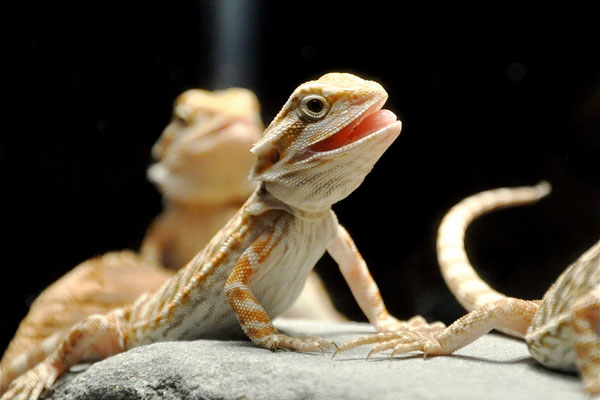The Ultimate Guide to Bearded Dragon Waving: How to Understand and Interpret Your Pet's Behavior
Introduction
Bearded dragons are fascinating creatures that make great pets. They are known for their docile nature and unique behaviors, such as head bobbing, arm waving, and tail twitching. One of the most interesting behaviors that bearded dragons display is waving. In this article, we will discuss everything you need to know about bearded dragon waving, including what it means, how to interpret it, and how to respond to it.
What is Bearded Dragon Waving?
Bearded dragon waving is a behavior that involves lifting one of their front legs and waving it in a repetitive motion. This behavior is typically seen in male bearded dragons during courtship rituals, but it can also be exhibited by females and juveniles. A waving bearded dragon may appear to be saying hello, but the behavior actually has a deeper significance.
Why Do Bearded Dragons Wave?
Bearded dragon waving is a communication behavior that is used to establish dominance or submission. When a male bearded dragon waves to another male or female, it is a sign of submission and respect. It is a way of saying, “I am not a threat, please do not attack me.” When a female bearded dragon waves to a male, it can be interpreted as a sign of submission or a way of showing interest in breeding. Juvenile bearded dragons may also wave to assert their dominance within their social group.
How to Interpret Bearded Dragon Waving
Interpreting bearded dragon waving requires observing the behavior in context. If your bearded dragon is waving to another lizard or human, it is likely a sign of submission or acknowledgement. If your bearded dragon is waving while displaying other signs of aggression or dominance, such as head bobbing, it could be a sign of warning or a challenge.
It is important to note that not all bearded dragons will exhibit waving behavior. Some may prefer other forms of communication, such as head bobbing or tail twitching. Understanding your bearded dragon’s unique behavior patterns and body language is crucial for developing a strong bond and providing quality care.
How to Respond to Bearded Dragon Waving
If your bearded dragon is waving to you, it is best to respond with a nod or a slow wave of your own. This will communicate to your bearded dragon that you have acknowledged their submission or greeting. Avoid making sudden movements or aggressive gestures, as this can be interpreted as a threat and may escalate the situation.
If your bearded dragon is waving while exhibiting signs of aggression or dominance, it is best to give them space and avoid direct contact. Overhandling or stressing your pet can lead to health problems and behavioral issues over time. Instead, observe your pet from a safe distance and provide them with a comfortable living environment that meets their unique needs.
Conclusion
Bearded dragon waving is a fascinating behavior that can provide insight into your pet’s communication and social behavior. While it may seem like a simple gesture, understanding the underlying significance is crucial for interpreting and responding appropriately. By developing a strong understanding of your bearded dragon’s unique personality and behavior patterns, you can provide them with the best possible care and build a strong bond that will last a lifetime.









